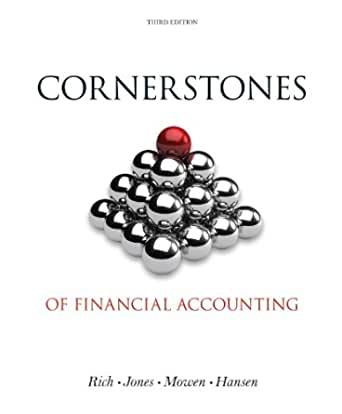Question
1. A Company delivers a profit of $2.00 per share with a development pace of 7.99%. The danger free rate is 9.54% and the market
1. A Company delivers a profit of $2.00 per share with a development pace of 7.99%. The danger free rate
is 9.54% and the market pace of return is 1.83%. The Company has a beta factor of 1.50.
Nonetheless, because of a choice of the Finance Manager, beta is probably going to increment to 1.75. Find
out the present just as the probably estimation of the offer after the choice.
2. When computing cost changes under a standard costing framework we should:
a. Contrast standard expenses and genuine expenses at the standard degree of movement
b. Contrast real expenses and those that were planned
c. Contrast genuine expenses and standard expenses at the real degree of yield
d. Think about genuine yields against planned yields
3. When doing fluctuation examination preferably, we ought to:
a. Take a gander at controllable unfavorable and good differences that are over a foreordained sum
b. Take a gander at unfriendly fluctuations that are over a foreordained sum
c. Take a gander at all fluctuations
d. Take a gander at all unfriendly and great fluctuations that are over a foreordained sum
4. The effectiveness proportion can be characterized as:
a. Real hours worked/planned work hours
b. Standard hours created/genuine work hours worked
c. Standard hours created/planned work hours
d. Real hours worked/genuine creation dependent on standard hours
5. The work rate difference can be determined by the accompanying condition:
a. (Standard hours - genuine hours) x real compensation rate
b. (Standard compensation rate - real pay rate) x standard hours worked
c. (Standard pay rate - real compensation rate) x real hours worked
d. Planned work costs - genuine work costs
6. In August real material utilized added up to 5,650 kg, planned yield was 1,000 units and standard material use was 5 kg for every unit. Genuine yield was 1,075 units. In the event that the standard material expense of every item is 25 the material effectiveness change will be:
a. 3,250 ideal b. 1,375 positive
c. 3,250 antagonistic d. 1,375 unfavorable
7. During July real work costs added up to 19,800, the standard pace of pay was 4.50 each hour also, the work rate change added up to 225 unfavorable. The real hours worked were:
a. 4,400 b. 1,012 c. 4,350 d. 3,450
8. An unfriendly material use change along with a positive materials value difference could recommend that:
a. We are paying something similar for our materials yet we are utilizing more than anticipated
b. We are addressing greater expenses for our materials than anticipated
c. We are paying less for our materials than anticipated however we are utilizing more materials
d. We are utilizing less material than anticipated yet in all out we are paying more than we ought to
9. An unfriendly work productivity difference along with a good work rate fluctuation may imply that:
a. The business is paying a higher hourly rate than the norm
b. Less work hours are expected to make a similar measure of yield
c. Less gifted staff are being utilized underway
d. More items are being made each hour
10. The equation for figuring the variable overhead all out change is:
a. (Standard hours less real hours) x variable overhead retention rate
b. Real factor overhead less (genuine hours x real hours worked x variable overhead assimilation rate)
c. Genuine variable overhead consumption less planned variable overhead use
d. Real factor overhead less (standard hours x real creation x variable overhead retention rate)
Step by Step Solution
There are 3 Steps involved in it
Step: 1

Get Instant Access to Expert-Tailored Solutions
See step-by-step solutions with expert insights and AI powered tools for academic success
Step: 2

Step: 3

Ace Your Homework with AI
Get the answers you need in no time with our AI-driven, step-by-step assistance
Get Started


